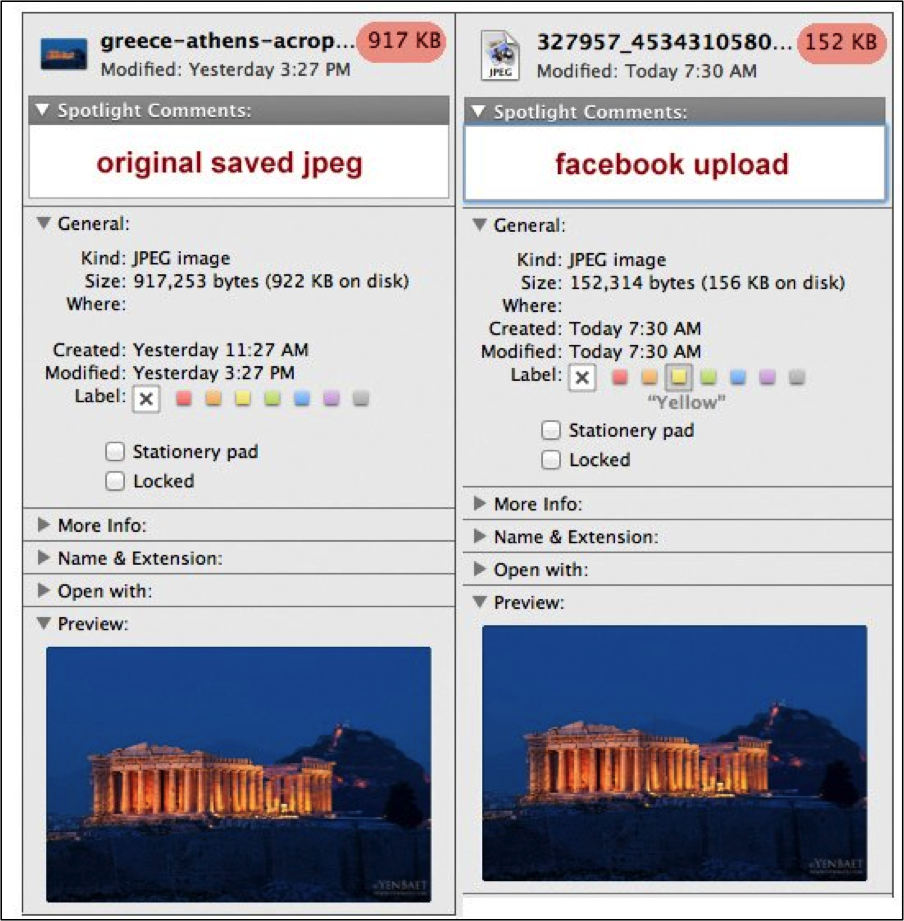Take My Picture!
Image is everything. Your hard work, your history, and your reputation are stored in the images you share in traditional and digital media formats. Traditional media has rules and regulations for sizing and clarity to ensure your image comes out exactly the way you want it. The digital environment also has rules. But the difference between the two is that, in the digital world, the rules change – frequently!
Time is Money
After spending many hours, days, or weeks in Photoshop, you finally have campaign images set up, and the client is thrilled with the preview. Somewhere along the path between creation and uploading, however, your images become blurred and discolored. After all your hard work, this is the last thing you want to see! Where did you go wrong?
Changes to images during uploads happen because the upload software compresses the images. The act of compressing images, or making their file size smaller, modifies the way the images appear.
Back to the future?
Facebook is notorious for having massive changes to their algorithms and compression systems with every update to the Facebook system. As marketers, it’s our job to keep up with all the changes. The latest addition in Facebook’s compression software focused on mobile viewing speed. In order for our smartphones and tablets to display images with the same speed we see on our supped-up work computers, the images need to maintain much of their quality but have an even smaller file size. Enter compression!
PNG’s, Pixels and JPEG’s, oh my!
PNG’s are better for website design and development, while Facebook loves JPEG’s. But which one do you choose? Save yourself a little frustration and create your images according to where you intend to upload them. Facebook has chosen the JPEG image format in order to increase the speed of the Facebook website. Remember your favorite 100% cotton T-shirt that accidentally got thrown in the dryer? Think of your image as your favorite T-shirt, and Facebook as the unforgiving dryer. No matter what you do to avoid the shrinkage, it’s going to happen.
Fortunately, Facebook has some guidelines below to help lessen the impact.
This may seem like a small matter, but when you process as many picture uploads a day as Facebook does, milliseconds count. Observe the image below, courtesy of Yen Baet, for a comparison.

Which Colors Do You See?
Can you paint with all the colors of the wind? Probably not. But what you can do is create your images in the proper format to make sure your colors appear as close as possible to your original creation. The color format that you use when you create the image is just as important — if not more important in some cases — than how you save it. So which do you choose, RGB or sRGB? RGB is beautiful and consists of many more colors than your typical sRGB format, as demonstrated in the chart below.
Unfortunately for us, therein lies the problem. With so much color space not covered by the standard sRGB color format, what happens when your image is shown on a device which cannot process RBG color (the outside line)? The colors that are unavailable are swapped for similar colors that are available, which can be messy. The solution, in short, is to take the safe route. Create your image in the sRGB format and give the industry a few more years before your break out those fancy neon colors in your new logo.
[more]
And that’s it! You are now the master of your own online image! Take charge and conquer your image creation and file compression goals. Subscribe to emfluence’s emsights newsletter to get insight like this sent straight to your inbox.





